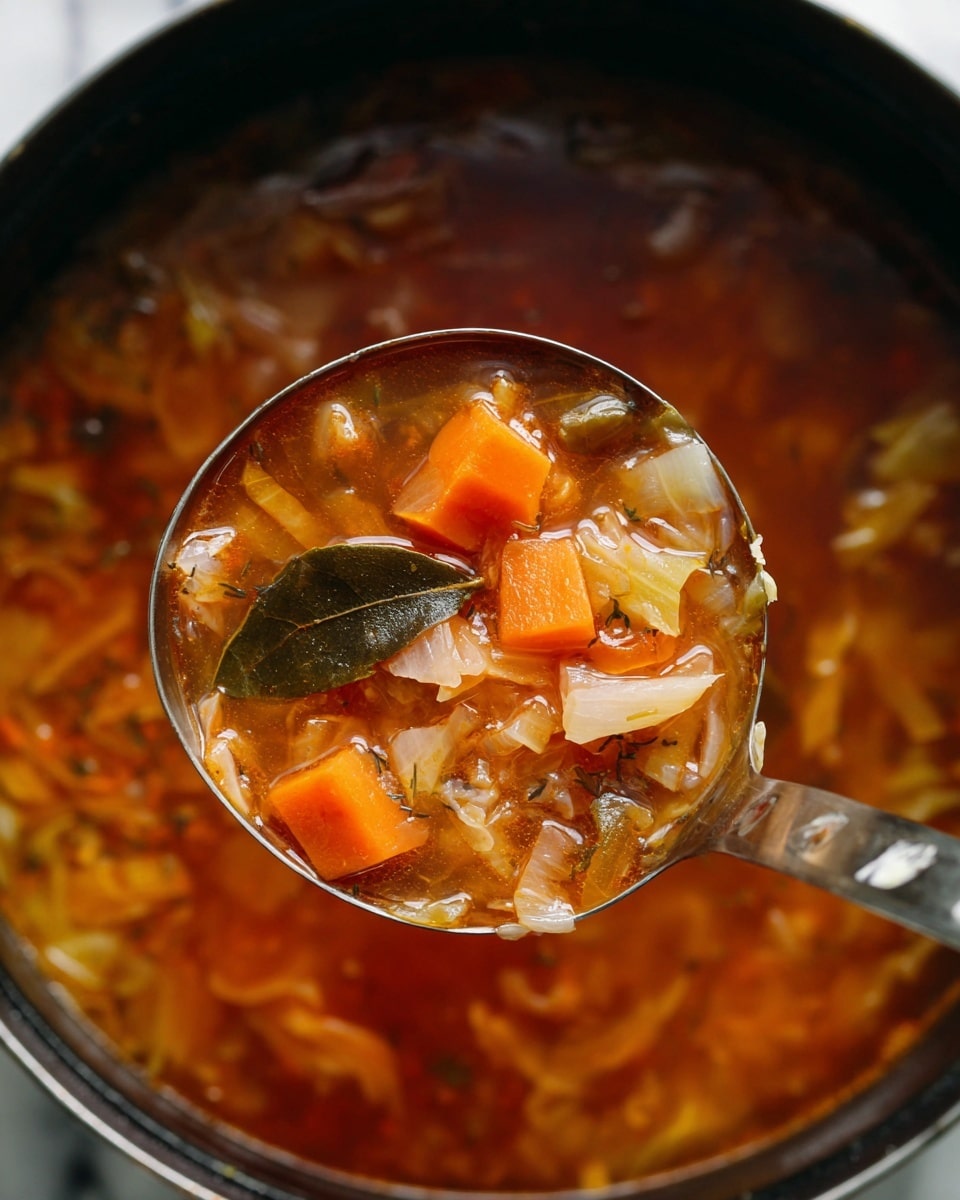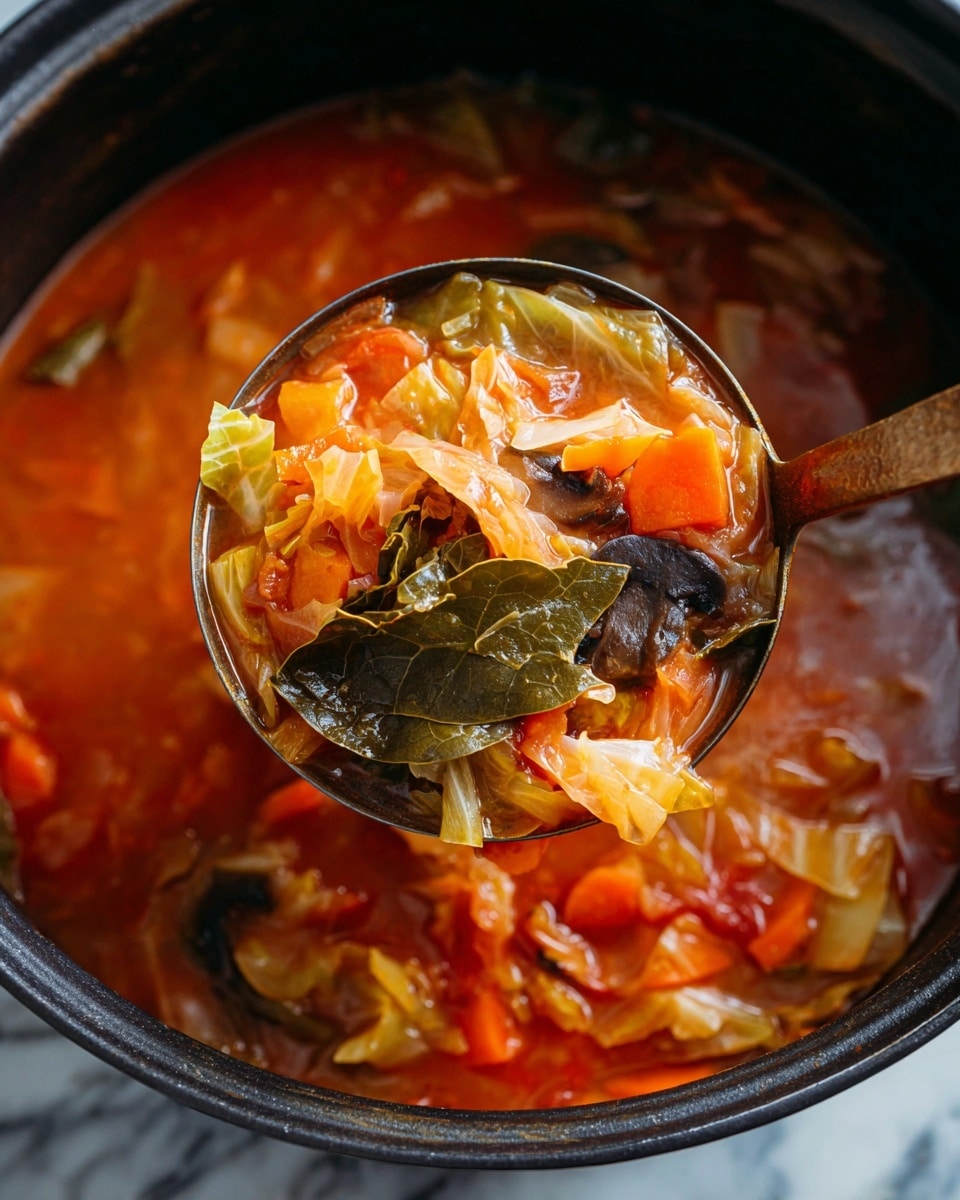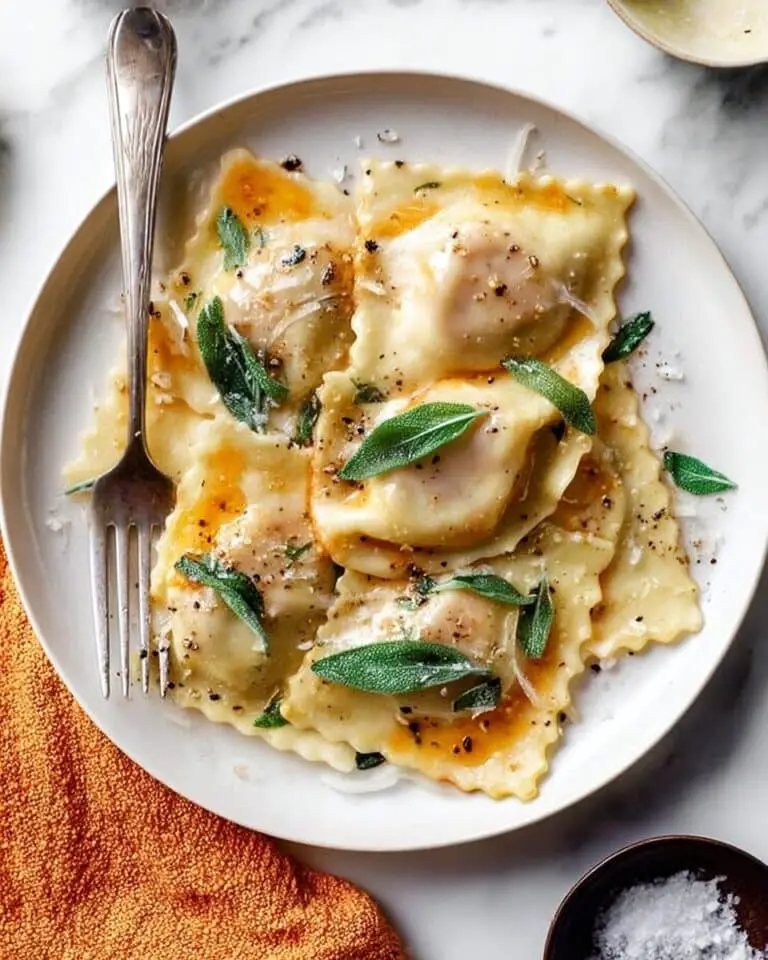I absolutely love this Best Winter Vegetable Soup Recipe because it’s the perfect cozy meal for cold days. There’s something so satisfying about a bowl that’s packed with hearty veggies, gentle spices, and that subtle richness from roasted squash. When the temperature drops, this soup feels like a warm hug you can eat—comforting, filling, and nourishing all at once.
When I first tried this recipe, I was surprised by how the simple ingredients come alive together, giving you a depth of flavor that even took my family by surprise. Whether you’re making this for a big gathering or just a quiet night at home, you’ll find that it’s easy to prepare and even easier to love.
Why You’ll Love This Recipe
- Rich, Roasted Flavor: Roasting the squash adds a caramelized sweetness that elevates the entire soup.
- Hearty and Nutritious: Packed with vegetables, split peas, and herbs, it’s a filling meal that still feels light.
- Easy Prep, Big Impact: Though it feels fancy, this soup is surprisingly straightforward to make and perfect for batch cooking.
- Family-Friendly and Flexible: You can easily swap veggies based on what you have on hand or what’s in season.
Ingredients You’ll Need
I love how these ingredients come together — the tomato paste adds a savory depth, the split peas give body without heaviness, and the roasted squash brings that silky texture. When shopping, try to pick fresh, firm vegetables for the best flavor and texture.
- Kabocha or Butternut Squash: Roasting these brings a caramelized sweetness that’s essential.
- Olive Oil: Use a good quality one for flavor and heart-healthy benefits.
- Salt and Black Pepper: Simple seasoning that enhances all the natural flavors.
- Tomato Paste: Adds umami and a subtle tang to the broth.
- Large Onion: Use sweet or yellow for best results—a great base flavor.
- Water: The base liquid, keeping the soup light and brothy.
- Yellow Split Peas: Adds protein and thickens the soup slightly—rinse well to remove dust.
- Carrots: Diced for sweetness and texture.
- Button or Cremini Mushrooms: They bring an earthy note and lovely bite.
- Cabbage: Adds bulk and a gentle crunch, balancing the soup.
- Dried Oregano: Herbs that bring warmth and depth.
- Dried Thyme: Combines beautifully with oregano for an herby character.
- Dried Bay Leaves: To infuse subtle, aromatic flavors.
Variations
One of my favorite things about this Best Winter Vegetable Soup Recipe is how easy it is to make your own. I often tweak it depending on what’s in the fridge or how hearty I want it. Don’t be shy to adjust based on your taste!
- Add Protein: Sometimes I toss in cooked beans or shredded chicken when I want a more filling meal.
- Spice It Up: A pinch of smoked paprika or a dash of cayenne adds a nice warmth without overpowering the veggies.
- Make It Vegan or Gluten-Free: This soup is naturally gluten-free; just use veggie broth instead of water for deeper flavor if you prefer.
- Switch the Veggies: Feel free to add parsnips, celery, or kale depending on the season or what you love.
How to Make Best Winter Vegetable Soup Recipe
Step 1: Roast the Squash to Bring Out That Sweetness
Start by preheating your oven to 375°F (190°C). While it warms, toss your cubed kabocha or butternut squash with olive oil, salt, and pepper on a parchment-lined baking sheet. Roast for about 30 minutes until the edges caramelize and the squash is tender. This roasting step makes all the difference — it builds that wonderful, sweet depth in the soup that you just can’t get with raw squash.
Step 2: Build the Flavor Base
While the squash is roasting, heat olive oil in a large soup pot over medium-low heat. Add your diced onions and tomato paste and cook gently until the onions soften and turn translucent. Stir frequently so the tomato paste doesn’t stick or burn — it should develop a rich aroma, which is a sign that you’re on track for good flavor.
Step 3: Combine Everything and Simmer
Next, add the water, yellow split peas, carrots, mushrooms, chopped cabbage, and all your herbs and seasonings. Don’t forget to add those beautifully roasted squash cubes! Bring the pot to a boil over high heat, then reduce to medium-low, cover, and let it simmer gently for 30 to 60 minutes. If you like your veggies very tender, aim for the full hour, but I often go for 45 minutes to keep some texture. The soup will thicken slightly as the split peas cook down.
Pro Tips for Making Best Winter Vegetable Soup Recipe
- Roast for Maximum Flavor: Don’t skip roasting the squash; it transforms the soup profoundly.
- Stir the Tomato Paste Often: This prevents burning and releases deep umami notes.
- Use Fresh Herbs if Possible: Fresh thyme and oregano brighten up the soup wonderfully.
- Check Seasoning at the End: Taste after simmering and adjust salt and pepper—you don’t want to over-salt early on.
How to Serve Best Winter Vegetable Soup Recipe
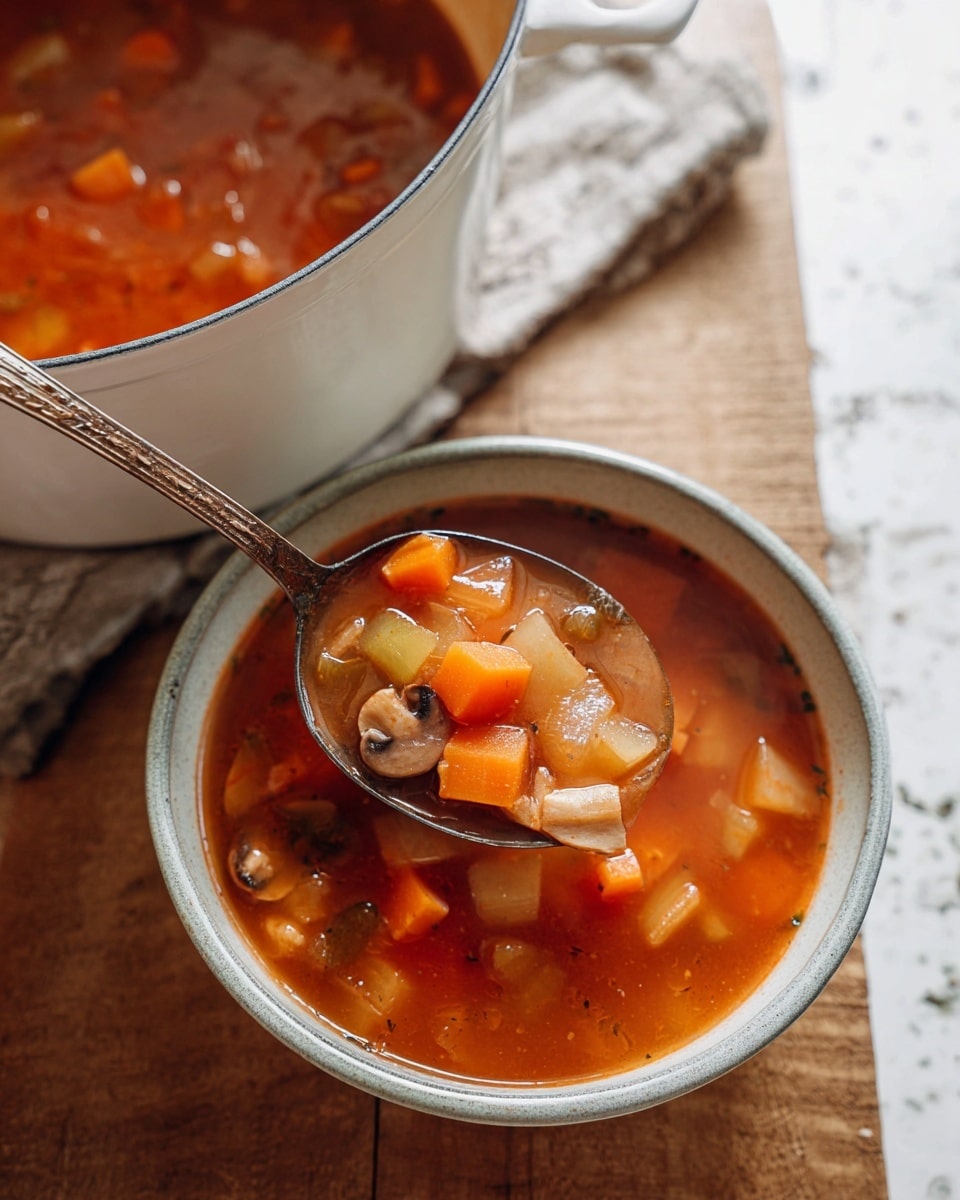
Garnishes
I usually top my soup with a sprinkle of fresh parsley or a few chopped chives for a pop of color and freshness. Sometimes I add a dollop of plain yogurt or vegan sour cream — it adds creaminess and a nice tang that complements the roasted squash.
Side Dishes
This soup pairs beautifully with crusty bread, like a baguette or sourdough, perfect for dipping. I also love serving it alongside a simple green salad dressed with lemon vinaigrette for some contrast in textures and flavors.
Creative Ways to Present
For entertaining, try serving this Best Winter Vegetable Soup Recipe in small, rustic crocks or mini pumpkins hollowed out as bowls — it’s a fun way to make the meal feel festive and special. Drizzle with a little truffle oil or sprinkle toasted pumpkin seeds on top for an extra wow factor.
Make Ahead and Storage
Storing Leftovers
I always store leftover soup in airtight containers in the fridge, and it keeps wonderfully for up to 4 days. The flavors actually deepen overnight, so leftovers often taste better than the first day.
Freezing
This soup freezes beautifully — just portion it into freezer-safe containers or bags. When I do this, I skip adding any dairy-based garnishes beforehand and add them fresh when reheating instead. It can keep in the freezer for up to 3 months without losing quality.
Reheating
To reheat, I gently warm the soup on the stove over medium heat, stirring occasionally. If it’s too thick, adding a splash of water or broth helps bring it back to the perfect consistency. Avoid boiling to keep the veggies tender but intact.
FAQs
-
Can I use other types of squash in this Best Winter Vegetable Soup Recipe?
Absolutely! While kabocha or butternut squash gives the best sweetness and texture, you can substitute with acorn squash or even pumpkin if needed. Just keep in mind that roasting times might vary slightly depending on the squash variety.
-
Is this soup suitable for freezing and reheating?
Yes, this soup freezes very well. Just cool it completely before freezing in airtight containers. When reheating, warm gently and add extra broth or water if it’s too thick. It’s a great make-ahead meal for busy weeks.
-
How do I make this soup vegan?
The recipe as written is naturally vegan since it uses water rather than broth and no animal products. For extra flavor, you can use vegetable broth instead of water, just ensure it’s vegan-friendly.
-
Can I add other vegetables to this soup?
Definitely! This recipe is very flexible. Feel free to add veggies like celery, parsnips, or kale. Just adjust cooking times accordingly to ensure everything is tender but not mushy.
Final Thoughts
This Best Winter Vegetable Soup Recipe has become one of my go-to comfort meals whenever the cold settles in. It’s warm, wholesome, and surprisingly easy, plus the flavors are just incredible once you let them meld together. I hope you enjoy making this as much as I do — it’s one of those recipes that feels like a hug in a bowl, perfect for sharing around the kitchen table with people you love.
Print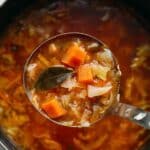
Best Winter Vegetable Soup Recipe
- Prep Time: 30 minutes
- Cook Time: 1 hour 15 minutes
- Total Time: 1 hour 45 minutes
- Yield: 12 servings
- Category: Soup
- Method: Baking and Stovetop
- Cuisine: American
- Diet: Vegetarian
Description
This Best Winter Vegetable Soup is a hearty, nourishing blend of roasted squash, yellow split peas, fresh vegetables, and aromatic herbs. Perfect for cold days, it combines the sweetness of roasted kabocha or butternut squash with savory tomato paste and earthy mushrooms to create a comforting and flavorful vegetable soup that serves 12.
Ingredients
For the Squash:
- 1½ pound cubed kabocha or butternut squash
- 2 tablespoons olive oil
- 1 teaspoon salt
- ⅛ teaspoon black pepper
For the Rest of the Soup:
- 2 tablespoons olive oil
- 5 tablespoons tomato paste (3 oz, or 1/2 a can)
- 1 large onion (about 8 oz/225g), diced
- 10 cups water
- ½ cup yellow split peas (rinsed and drained)
- 2 large carrots, diced
- 8 ounces button or cremini mushrooms, diced
- 1 pound cabbage, roughly chopped
- ½ teaspoon dried oregano
- 1 teaspoon dried thyme
- 6 dried bay leaves
- 1 teaspoon salt (or to taste)
- ½ teaspoon ground black pepper
Instructions
- Roast the Squash: Preheat the oven to 375°F (190°C). On a parchment-lined sheet pan, toss the cubed squash with 2 tablespoons olive oil, 1 teaspoon salt, and ⅛ teaspoon black pepper. Spread evenly and roast for 30 minutes until tender and caramelized.
- Sauté Onion and Tomato Paste: While the squash roasts, heat 2 tablespoons olive oil in a large soup pot over medium-low heat. Add the diced onion and tomato paste, cooking for several minutes until the onion becomes translucent and fragrant, stirring frequently to prevent burning.
- Add Soup Ingredients: To the pot, add 10 cups of water, rinsed yellow split peas, diced carrots, mushrooms, roughly chopped cabbage, dried oregano, dried thyme, bay leaves, salt, and black pepper, along with the roasted squash from the oven.
- Cook the Soup: Bring the mixture to a boil over high heat. Once boiling, reduce the heat to medium, cover the pot, and let simmer for 30 minutes to 1 hour, depending on your desired tenderness of the vegetables and peas.
- Serve: Remove bay leaves before serving. Ladle the soup hot into bowls and enjoy as a comforting winter meal.
Notes
- Roasting the squash caramelizes it, adding depth of flavor to the soup.
- Yellow split peas add protein and help thicken the soup naturally.
- Adjust salt to taste towards the end of cooking to avoid oversalting.
- This soup reheats well and flavors deepen over time, making it great for leftovers.
- For a vegan option, ensure tomato paste contains no animal ingredients.
Nutrition
- Serving Size: 1 cup
- Calories: 140 kcal
- Sugar: 5 g
- Sodium: 400 mg
- Fat: 5 g
- Saturated Fat: 0.7 g
- Unsaturated Fat: 3.8 g
- Trans Fat: 0 g
- Carbohydrates: 22 g
- Fiber: 6 g
- Protein: 6 g
- Cholesterol: 0 mg

